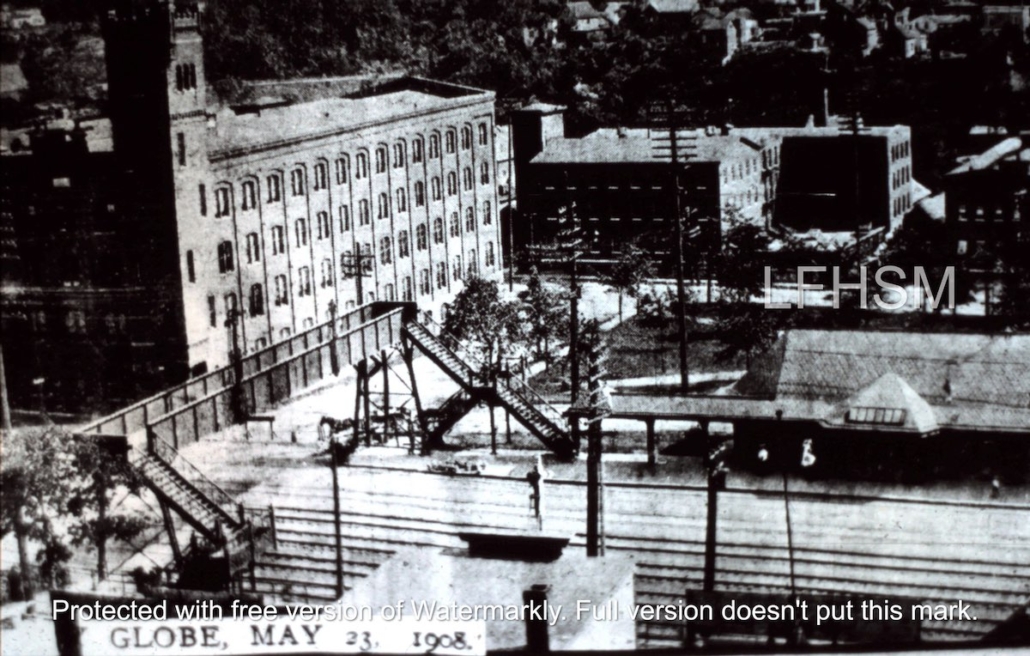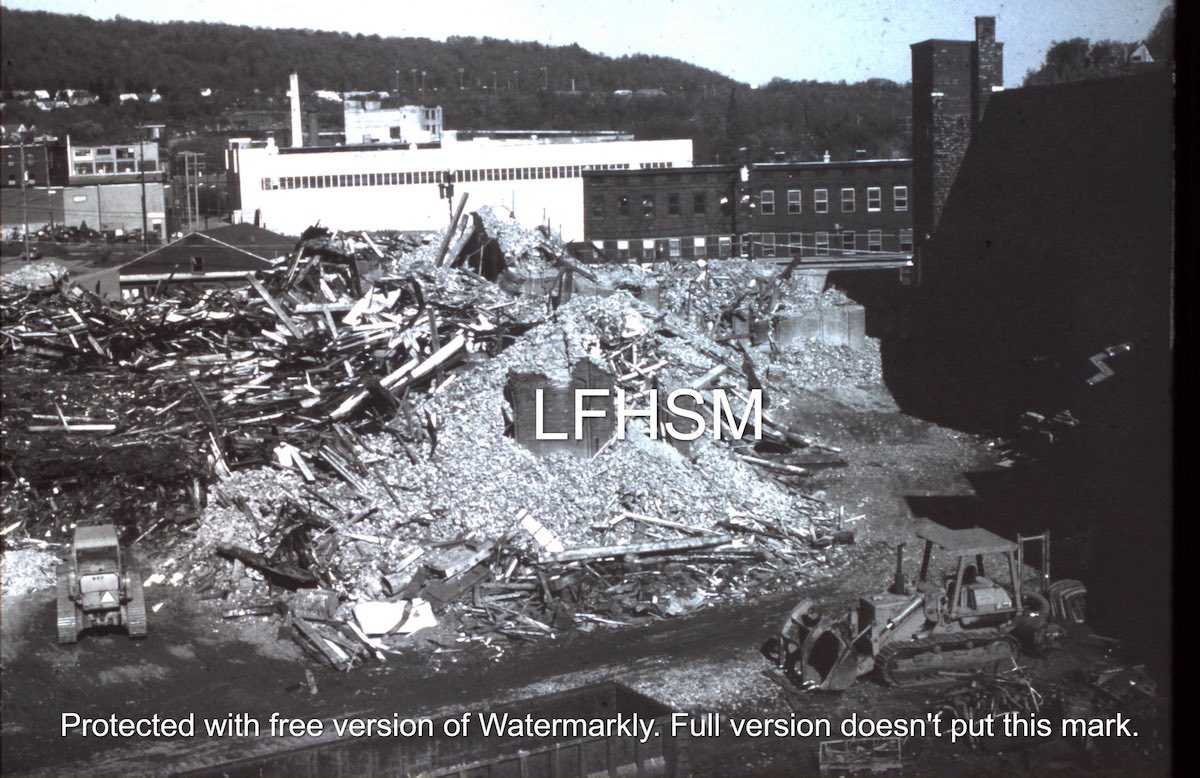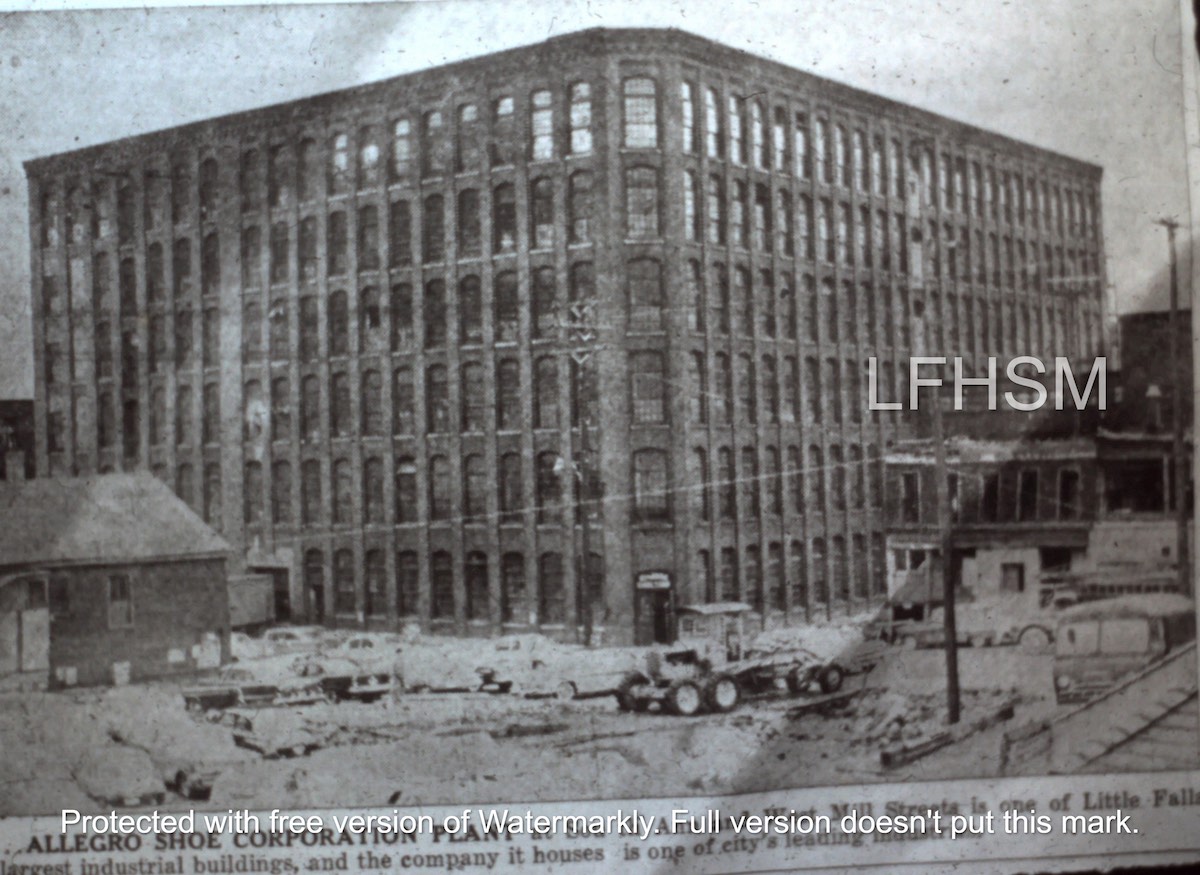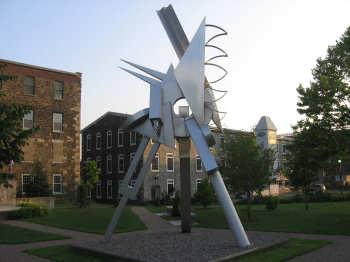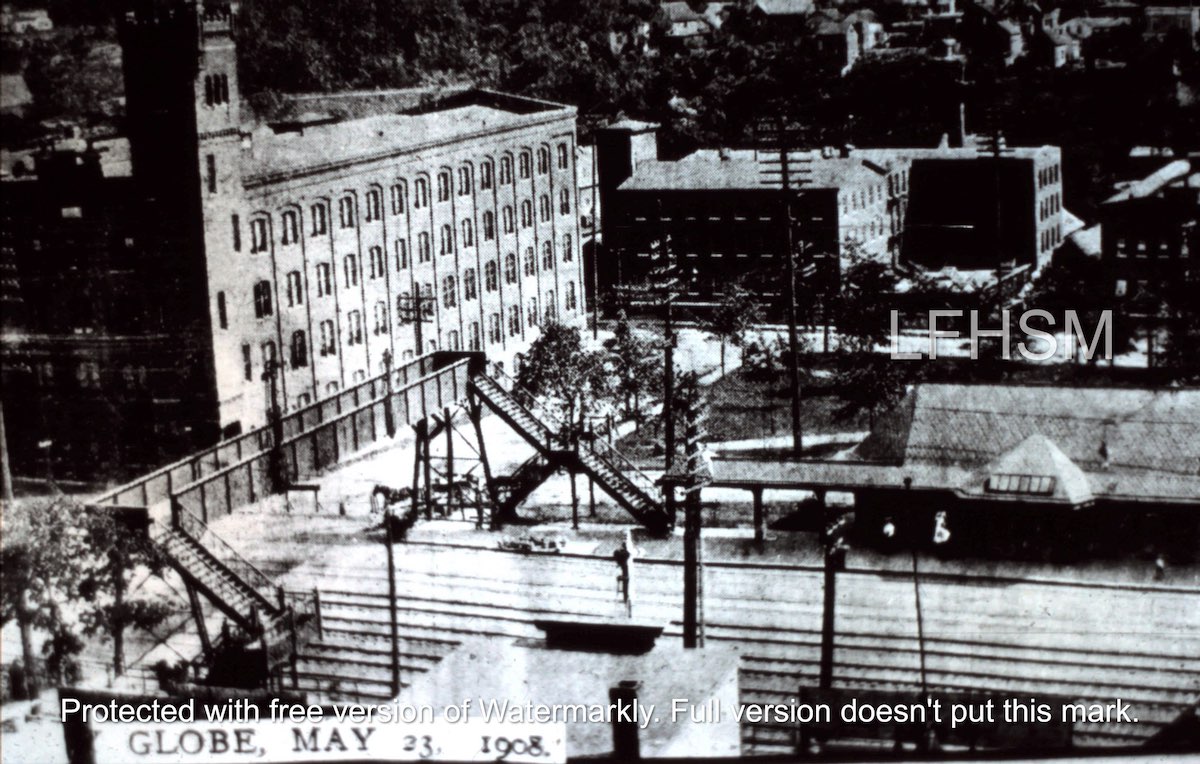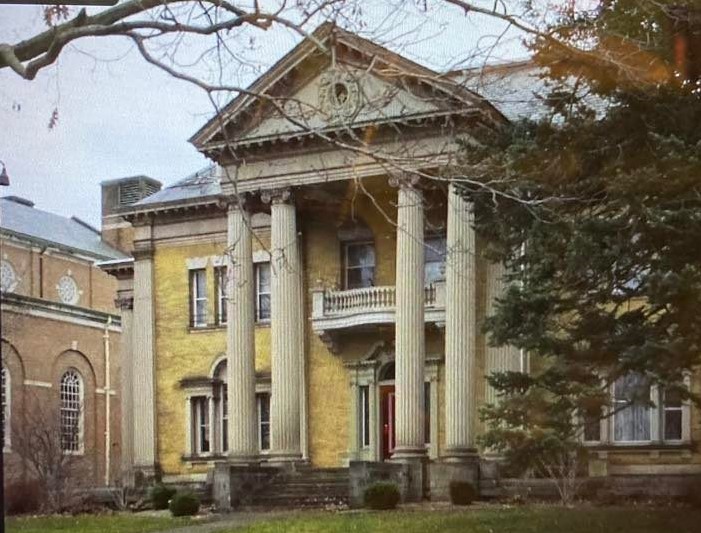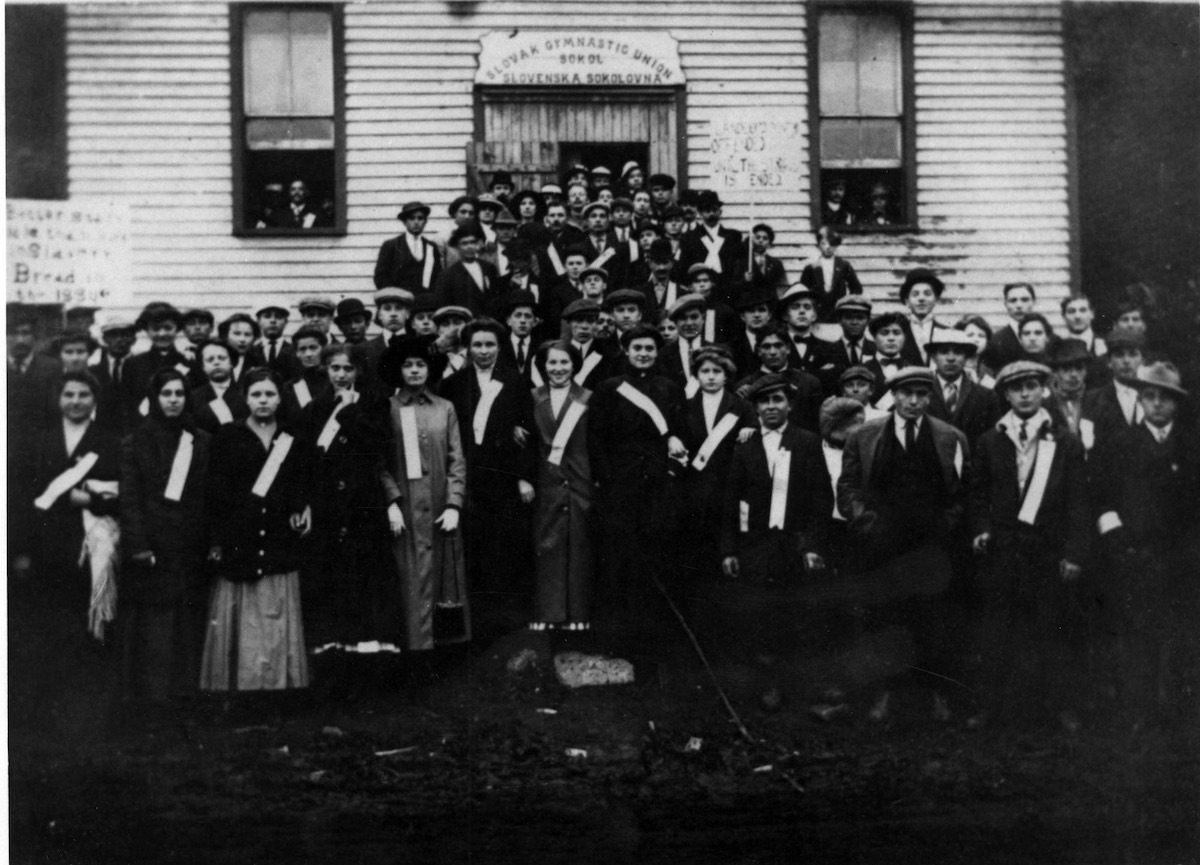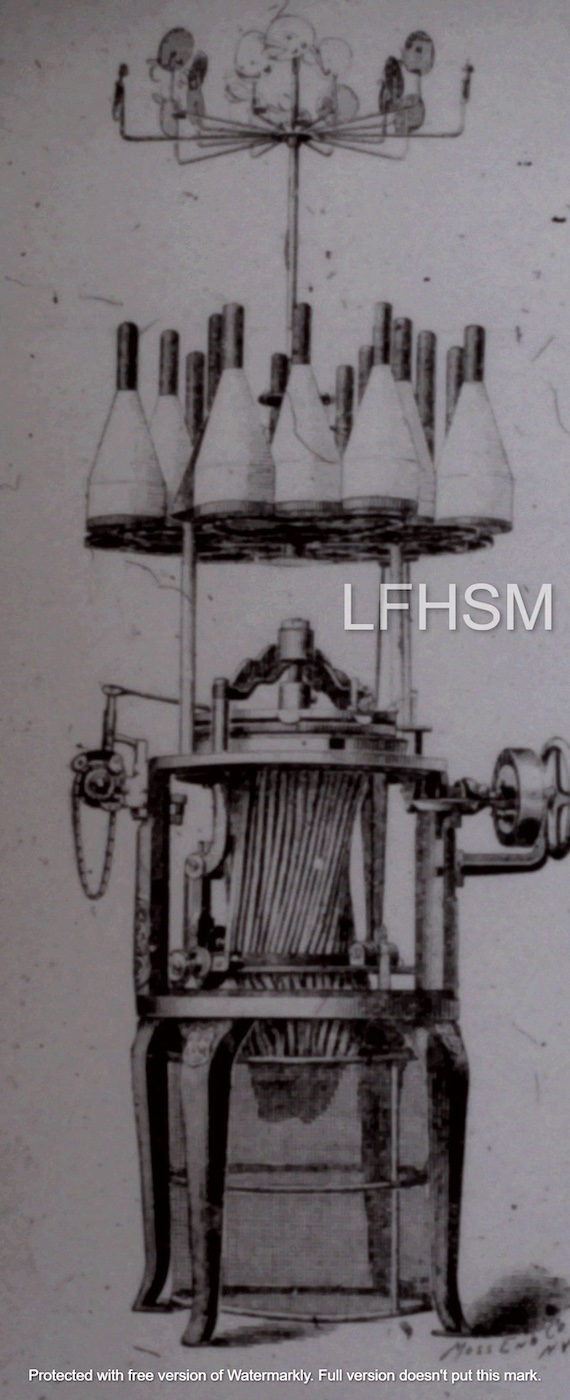March 22, 1987: after being a thorn in the city’s side for the last ten years, the Allegro Shoe Company’s six story, 140,000 square foot building on South Ann Street is coming down.
“One of the largest shoe manufacturers in the nation, and a major employer in the city for many years, the company fell victim to cheap foreign imports. In 1974 the company moved to a smaller facility in the Little Falls Industrial Park.”
March 22, 1987, Cooney Archives
ALLEGRO SHOE COMPANY
In 1949, The Cosmos Shoe Co. of New York City established a sister company, the Allegro Shoe Co. In 1950, the newly established Allegro Co., which manufactured women’s shoes, was housed in the old MacKinnon Mill on the southwest corner of Ann and West Mill Street, utilizing all six floors of the mill. They employed well over a thousand workers during their peak business years. By 1974, business had declined, and the company moved into a smaller manufacturing facility in Riverside Industrial Park.
STERZNAR PARK
The Allegro Mill was razed in 1987, with the empty lot then becoming a city park named Sterznar Park. Industrial-style sculptures and a stage that is used for musical and theatrical performances, are within the greenspace of Sterznar Park, which is encompassed by gardens.
*From The Cooney Archive’s: This Day In History by Louis Baum JR, Digitizing of historical photos by Gail & Mike Potter, Post compiled & written by Darlene Smith.
ROBERT MACKINNON
Robert Mackinnon was born in Watervliet, Albany, NY, to Scottish immigrant parents, Alexander and Catherine Mackinnon in 1854. His father worked in a knitting mill and by the age of seventeen, Robert had joined him as a knitting mill hand.
MacKinnon came to Little Falls in 1881, along with Walter Hume and Albert Ablett, as his partners to manage a knitting manufacturing business in the old Anchor Mill. It was in this mill in the early 1870s, that the first knit underwear was manufactured at Little Falls by a Frenchmen. The present-day location would be in the vicinity of the parking lot west of the Feldmeier plant on the south side of East Mill Street, which the Anchor Mill was razed by the Burrell’s in 1954 to build the manufacturing plant of Cherry-Burrell.
Around 1884, Mackinnon married Ella S. Levison and over the course of their marriage they had at least five children, namely: Molly, with an estimated birth in 1885; Isabel, with an estimated birth of 1887; Marguerite, with an estimated birth of 1891; Morton, with an estimated birth of 1895; and Donald, with an estimated birth of 1905.
The business of MacKinnon and his partners prospered and in 1887 MacKinnon ventured off on his own, with building a woolen knitting mill at the corner of East Mill and Second Streets, which had a workforce of a thousand mill workers.
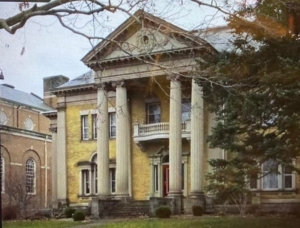 In 1899, MacKinnon built a mansion at 435 Genesee Street, Utica, NY, for the sum of $100,000. The mansion was built as a special gift for his wife, and it featured a stately pillared entrance, a library, music room, conservatory, third floor ballroom and a twenty-five foot plate glass window in the dining room. In 1921, it was purchased by the First Presbyterian Church to be used as their parish house and it is still used in that capacity today. It was built by a Binghamton, NY, architect C. Edward Vosbury. The MacKinnon House was listed on the National Registry of Historical Places in 1988.
In 1899, MacKinnon built a mansion at 435 Genesee Street, Utica, NY, for the sum of $100,000. The mansion was built as a special gift for his wife, and it featured a stately pillared entrance, a library, music room, conservatory, third floor ballroom and a twenty-five foot plate glass window in the dining room. In 1921, it was purchased by the First Presbyterian Church to be used as their parish house and it is still used in that capacity today. It was built by a Binghamton, NY, architect C. Edward Vosbury. The MacKinnon House was listed on the National Registry of Historical Places in 1988.
According to the Cooney Archives: THIS DAY IN HISTORY …”ON MARCH 20, 1897, from all indications Little Falls will witness a building boom in 1897. Robert MacKinnon will build a new five story factory for knit goods. Other new construction projects planned are at the Stacy Company on John Street, Irving Snell a factory on Albany Street, improvements at the electric works, and an addition to the Barnett tannery for the manufacture of russet leather.”
The Mackinnon’s Mills continued to prosper, and he built a larger woolen knitting mill in 1900 on the northeast corner of West Mill and Ann Street, being 380 South Ann Street, which became known as: the Phoenix Mill from 1910 through 1928; as Melrose Slipper Co. from 1934 through 1949: and as Allegro’s in 1950.
According to the Cooney Archives: THIS DAY IN HISTORY …”ON NOVEMBER 10, 1900 the Charity Ball, held on the second floor of the new Robert MacKinnon Mill, raised $30,000. with the proceeds going to the Little Falls Hospital. Besides being a great financial success it was an important social event. Rath’s orchestra of Utica provided the dance music. After 11 o’clock a sumptuous supper was served on the third floor. MacKinnon paid all expenses.
According to the Cooney Archives: THIS DAY IN HISTORY …”ON MAY 13, 1900, in the Robert MacKinnon Mill, census enumerators report:: Women of 16 or over 675; girls under 16, 23; men of 16 or over, 420; boys under 16, 22 ; total =1,140.”
According to the Cooney Archives: THIS DAY IN HISTORY …”ON FEBRUARY 3, 1902, as a result of a severe blizzard, Robert MacKinnon sent teams for his female operatives who lived a distance from the mills and were unable to get out. He provided them with dinner at the mill and had them conveyed home at night.”
According to the Cooney Archive: THIS DAY IN HISTORY …”ON SEPTEMBER 26, 1910, the MacKinnon Mills have closed, but there is nothing to worry about” said the Evening Times. Soon later, owner Robert MacKinnon, who was earning $90,000 to $120,000 per year filed for bankruptcy, and then lost $110,000 in Mexican Bonds. He went to work in Livingston’s shirt waist company in Little Falls for $25 a week. He died here at the home of his sister.”
PHOENIX MILL
In 1910, MacKinnon lost his mills. He died on the 25th of March in 1922. The Phoenix Underwear Company was formed to take over the MacKinnon Mills holdings in 1910. They were met with the Textile Strike in 1912, along with the Gilbert’s woolen textile mill, the Gilbert Mill.
According to the Cooney Archive: THIS DAY IN HISTORY …” ON OCTOBER 30, 1912, the strike at the Phoenix Mill escalated as a riot broke out when the police tried to push their way through a crowd of tightly packed workers. Special officers were stabbed and shot. Many officers and strikers were hurt in a second riot raid at the Slovak gymnasium on German Street (Flint Avenue).”
TEXTILE STRIKE OF 1912
The Textile Strike of 1912 was eighty-seven days long and began on the 9th of October in 1912. Unrest amongst the mill workers began to form when the “Jackson Bill” was passed in 1911, which was passed at the request from the NYS Federation of Labor. This bill reduced the hours of labor in a factory done by women and minors to a fifty-four-hour work week: their work week was cut from sixty hours down to fifty-four hours for each weekly pay period.
The mill owners felt if the workers could afford to send money back to their home countries, that they should have their pay cut for the 54 hour work week. At this time the living conditions of the mill workers, which were mainly young women, were in squalid conditions, with no interior plumbing for bathing and sanitary needs. Sickness and disease were rampant in the tenement housing of the mill workers.
An immigrant Russian nurse, Helen Schloss, had been brought to Little Falls earlier in May of 1912 by the Fortnightly Club, which was a social society club that consisted of prominent city women, with most being the wives of the industrialists that owned the mills within the city. Schloss was hired to educate the mill workers about tuberculosis and how to eradicate it. She found their living and working conditions deplorable, with becoming aware of the inequalities and racism that created these conditions, which the club and their husbands refused to address.
 On the 9th of October six-hundred and sixty-four workers went on strike from the Phoenix and Gilbert Mills, with seventy percent of the strikers being women. Schloss held a food kitchen in Sokol Hall, which was a social center for the Slovak community at Little Falls and was located on German Street, known today as Flint Avenue, which would be the present-day vicinity of the Rock City Barber Shop.
On the 9th of October six-hundred and sixty-four workers went on strike from the Phoenix and Gilbert Mills, with seventy percent of the strikers being women. Schloss held a food kitchen in Sokol Hall, which was a social center for the Slovak community at Little Falls and was located on German Street, known today as Flint Avenue, which would be the present-day vicinity of the Rock City Barber Shop.
The workers were striking against inadequacies of pay, working conditions, and living conditions. They were represented by two national unions, with one union being the IWW, being the International Workers of the World Union, which was led by Matilda Rabinowitz. Rabinowitz organized the picket lines, obtained legal aid when needed, pushed for the strikers’ children to be housed in IWW sympathizer’s homes, and for much needed reform within the textile industry.
The Socialist Party was gaining a foothold in politics at this time, which wanted a change in the profits driven by the capitalist system of the small elite class of factory owners that dictated the economy. It was felt that it was done so at the expense of the large under class group of workers that created the wealth, who didn’t receive any of the rewards for their hard work.
The New York State Department of Labor’s Bureau of Mediation and Arbitration arrived in Little Falls and held hearings on December the 27th, the 28th, and the 30th. As the results of the inquests, the investigators came up with a six-point plan, that the mill owners agreed to, which was:
● There will be no discrimination against individual strikers.
● The companies reinstate all former employees as soon as possible.
● All men and women working 54 hours to receive pay formerly received for 60 hours.
● Piece work rates to be adjusted to compensate for reduction of time caused by fifty-four-hour law.
● Night lunch to be adjusted by the workers directly involved.
● Winding schedules: Cop yarn in most sizes is raised 5 cents per 100 pounds. Mule spun yarn is increased from 9 cents per 100 pounds. On the largest size to 16 cents per 100 pounds. On the smallest size to 10 cents per 100 pounds. Additional is paid on latch needle knitting. Other piece work prices affected by the fifty-four-hour law to be adjusted on the same plan.
Rabinowitz, along with interpreters, held a meeting on the 2nd of January in 1913, with the mill strikers, resulting with the strikers agreeing to the terms set before them. The textile mill workers returned to work on the 6th of January in 1913, ending the strike.
According to the Cooney Archives: THIS DAY IN HISTORY …” ON DECEMBER 20, 1912, headlines screamed ”PHOENIX MILLS CLOSE FOR INDEFINITE PERIOD” as about 1000 hands were unemployed, heralding the beginning of a major business depression. Three months later, the workers returned to work accepting a 23% reduction in wages rather than remaining unemployed.”
The Phoenix Company was moved south to Statesville, North Carolina in 1928.
MELROSE SLIPPER COMPANY
According to the Cooney Archives: THIS DAY IN HISTORY …”ON DECEMBER 19 1933, it’s full speed ahead to get the Melrose Slipper company of New York City into operation in Little Falls. All doubts about the ability of the company to secure a sufficiency of help would seem to be removed by the number of applications made to the company’s New York office. 125 to 150 jobs are projected.”
During the Depression, the Little Falls Industrial Committee was formed, which it was through their efforts that the Melrose Slipper Company came to Little Falls.
KNITTING MILL HISTORY
In the early 1870s, knitting mills began to appear at Little Falls. With the tremendous growth of the knitwear industry at Little Falls, the newly chartered city of 1895 became known as the Mohawk Valley’s knit goods center, with the knitting machine as the city’s official emblem.
As steam, electricity, and gas usage were taking a hold in homes in the 1920s, in-home central heating became an easy means to regulate the temperature efficiently throughout the home, which decreased the need for woolen knitwear for warmth. By 1960, the only operating woolen mill at Little Falls was the Gilbert Knitting Mill.
*From The Cooney Archive’s: This Day In History by Louis W. Baum JR, Digitizing of historical photos by Gail & Mike Potter, Article written by Darlene Smith.
SIDE NOTE: Please view the Little Falls Historical Society’s virtual ” 1912 Textile Strike Exhibit” at: https://littlefallshistoricalsociety.org/…/1912-little…/

